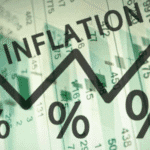
The Era of Persistent Inflation
In 2025, inflation is no longer a passing concern — it has become a defining feature of the global financial landscape. After years of pandemic disruptions, supply shortages, and geopolitical tension, countries across the world are struggling to find the right balance between growth and stability.
From New York to Tokyo, central banks are rewriting the rules of monetary policy, while investors brace for a new era of higher prices, slower growth, and volatile markets.
This article explores the key global inflation trends in 2025, how they’re reshaping financial markets, and what investors can do to protect their wealth in this uncertain environment.
Section 1: Why Inflation Remains High in 2025
Even after years of tightening monetary policy, inflation continues to challenge major economies. Several global forces are keeping prices elevated:
- Energy Price Volatility
The world’s energy markets remain unstable. Supply restrictions, the transition to renewable energy, and geopolitical uncertainty continue to push oil and gas prices higher. - Ongoing Supply Chain Disruptions
Although global logistics have improved since 2023, key sectors such as semiconductors, raw materials, and agriculture still face shortages and shipping delays. - Labor Shortages and Rising Wages
Worker demand outpaces supply in sectors like healthcare, technology, and logistics. Rising wages feed back into higher production and consumer costs. - Strong Consumer Demand
Even with higher interest rates, global demand for services, housing, and technology remains robust — preventing prices from falling significantly.
Section 2: Central Banks’ New Strategies
The U.S. Federal Reserve
The Fed remains focused on bringing inflation closer to its 2% target. With interest rates holding around 5.25%–5.5%, the U.S. economy is showing resilience but also signs of cooling. The Fed’s data-driven approach means rate cuts are unlikely until inflation shows sustained decline.
European Central Bank (ECB)
Europe’s inflation battle is complicated by energy dependency and sluggish growth. The ECB continues to prioritize price stability, even if it means a prolonged period of slow economic recovery.
Bank of England (BoE)
The UK faces persistent inflation driven by labor market rigidity and housing shortages. The BoE is expected to maintain higher rates through 2025, despite growing concerns about mortgage defaults.
Bank of Japan (BoJ)
After decades of deflation, Japan is experiencing moderate inflation. The BoJ is gradually shifting away from its ultra-loose policy, signaling a historic turning point in global monetary dynamics.
Section 3: Inflation’s Impact on Global Markets
Inflation directly shapes market behavior — from stock prices to bond yields and commodities.
- Equities: Growth stocks, especially in tech, struggle under high-rate environments. Meanwhile, energy, industrials, and consumer staples outperform.
- Bonds: Yields remain elevated as investors demand higher returns to offset inflation risk.
- Commodities: Gold, silver, and oil remain safe havens as investors hedge against currency devaluation.
- Real Estate: Property values rise in some regions but face affordability challenges in others due to expensive financing.
Section 4: The Strong Dollar and Currency Shifts
The U.S. dollar remains dominant as investors flock to safe assets. However, currencies tied to strong commodity exports — like the Canadian dollar and Australian dollar — show resilience. The Euro faces headwinds from weak growth, while emerging-market currencies remain highly sensitive to U.S. policy moves.
Key takeaway: The currency market in 2025 rewards countries with fiscal discipline and resource-driven economies.
Section 5: Inflation and the Cost of Living
Across the world, households are adapting to a new normal:
- Grocery prices are 20–30% higher than pre-pandemic averages.
- Rent and housing costs continue to rise, particularly in major global cities.
- Energy bills fluctuate with oil prices, keeping consumers on edge.
These challenges are reshaping consumer behavior — with spending shifting toward essentials and savings rates declining in most developed countries.
Section 6: Top Inflation-Resistant Investment Strategies
- Diversify Globally
Avoid concentration in one region. Inflation and monetary policy vary widely — global diversification helps reduce risk. - Invest in Real Assets
Commodities, gold, and infrastructure projects tend to appreciate with inflation. - Focus on Dividend Stocks
Companies with strong cash flows and regular dividends can offset the erosion of purchasing power. - Use Treasury Inflation-Protected Securities (TIPS)
In the U.S. and similar instruments elsewhere, these bonds automatically adjust with inflation rates. - Stay Liquid but Strategic
Cash loses value during inflationary periods, but maintaining liquidity allows investors to seize opportunities when markets correct.
Section 7: The Outlook for 2026 and Beyond
Most analysts predict that inflation will gradually decline by late 2026, but global factors — such as energy transitions, geopolitical tensions, and climate-related supply shocks — may keep prices above historical averages for years to come.
The next economic decade will likely favor disciplined investors who adapt early, focus on value, and maintain a global mindset.
Conclusion: A New Financial Reality
The global economy of 2025 is navigating an unprecedented shift — where inflation is structural, not temporary. Central banks, businesses, and investors are learning to operate in a higher-rate, lower-growth world.
For investors, this new reality means one thing: adapt or be left behind. Those who understand inflation dynamics, diversify intelligently, and focus on long-term value will emerge as the true winners of the post-inflation era.

















